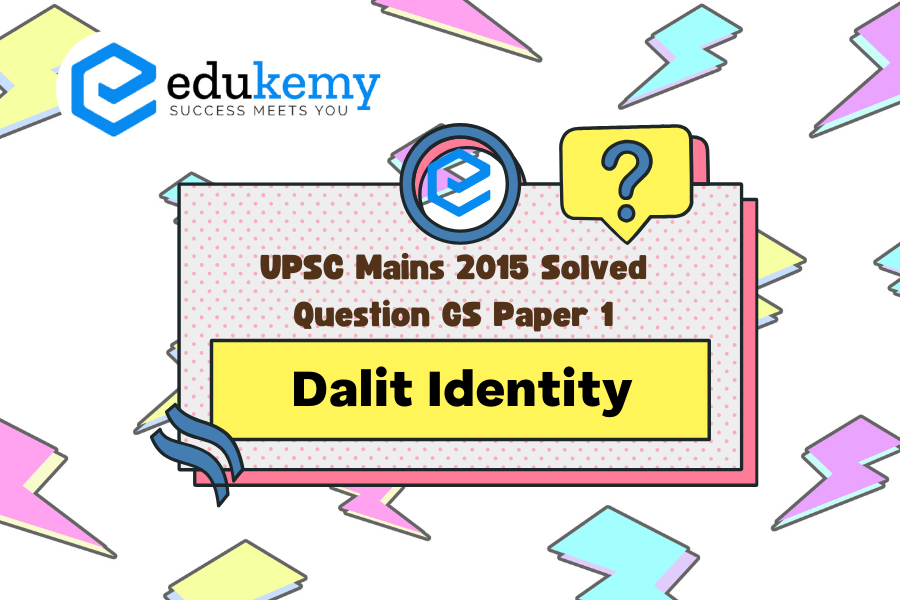
In the complex socio-cultural landscape of India, the issue of caste continues to be a persistent challenge, with the contemporary movements for the assertion of Dalit identity playing a crucial role in challenging and reshaping the deeply ingrained caste system. The question of whether and how these movements contribute to the annihilation of caste sparks intense debates among scholars, activists, and policymakers. Dalit identity movements, rooted in the struggle for social justice and equal rights, are often seen as agents of change, aiming to dismantle the oppressive structures of caste. However, the effectiveness of these movements in achieving the annihilation of caste is a subject of scrutiny. This discourse delves into the multifaceted dimensions of contemporary Dalit identity movements, examining their strategies, impact on societal perceptions, and the extent to which they challenge age-old prejudices. As we navigate this intricate terrain, it becomes imperative to critically assess whether these movements are transformative forces that genuinely contribute to the annihilation of caste or if the persistent societal challenges require more nuanced and comprehensive approaches.
Tag: Indian Society.
Contents
Decoding the Question:
- In the Introduction, try to explain who are Dalits.
- In Body,
- Briefly discuss their origin and evolution.
- Throw some light on the Dalit movement and its essence.
- Conclude your answer by briefly summarizing the nature of the movement.
Answer:
The term Dalit means ‘oppressed’, ‘broken’, or ‘crushed’ to the extent of losing original identity. However, this name has been adopted by the people otherwise referred to as Harijans, or ‘Untouchables’, and has come to symbolize for them a movement for change and the eradication of the centuries-old oppression under the caste system. In legal and Constitutional terms, Dalits are known in India as scheduled castes. There are currently some 166.6 million Dalits in India.

Origin and Evolution of Dalits:
- The roots of Dalit oppression go back to the origins of the caste system in the Hindu religion. The philosophy of caste is contained in the Manusmriti, a sacred Hindu text dating from the second century BCE
- The introduction of Islam to India from about the thirteenth century CE led to widespread conversions by many low-caste and ‘untouchable’ groups, and by the mid-nineteenth century about one-quarter of the population was Muslim.
- During the struggle for Indian independence, two different approaches emerged for the improvement of the situation of the people now known as Dalits. The first was led by Mahatma Gandhi, who believed in raising the status of Dalit people (or, as he preferred to call them, Harijans) while retaining elements of the traditional caste system but removing the degrading stigma and manifestations of ‘untouchability’.
Current issues:
- Around 80 percent of Dalits live in rural areas. Economic exploitation remains their most acute problem. In some areas many high-caste landlords pay their Dalit laborers minimum wages in cash or food, or nothing at all; resistance is frequently met by violence, sometimes resulting in the death or injury of the victim.
- Mob violence against Dalit communities is frequently reported, sometimes led by landlords, and has been especially noticeable in situations where Dalit workers have joined labor unions or made progress in gaining education and economic mobility.
- Dalit women have been particularly badly affected in recent times. They are discriminated against not only because of their sex but also because of religious, social, and cultural structures which have given them the lowest position in the social hierarchy. The stigma of ‘untouchability’ exposes them to an even higher risk of abuse and exploitation.
- In areas such as health, education, housing, employment, wages, application of legal rights, decision-making, political participation, and rural development, Dalit women have been almost entirely excluded from development policies and programs.
- Large numbers migrate to cities or to labor-scarce rural areas in different parts of India. Many Dalit families have left rural areas to live in slums and on the pavements of the rapidly growing cities.
Sociologists’ attempts to classify Dalit movements have led them to believe that they belong to all types, namely reformative, redemptive, and Revolutionary. At its best it was Revolutionary in terms of society and redemptive in terms of individuals. In partial context, the ‘post-Ambedkar Dalit movement’ has had Revolutionary practice. But on the whole, this movement has been a reformist movement. It has mobilized along caste lines, but only made half-hearted efforts to destroy caste; it has attempted and achieved some real though limited societal changes with gains especially for the educated sections among Dalits, but it has failed to transform society sufficiently to raise the general mass from what is still among the most excruciating poverty in the world.
In case you still have your doubts, contact us on 9811333901.
For UPSC Prelims Resources, Click here
For Daily Updates and Study Material:
Join our Telegram Channel – Edukemy for IAS
- 1. Learn through Videos – here
- 2. Be Exam Ready by Practicing Daily MCQs – here
- 3. Daily Newsletter – Get all your Current Affairs Covered – here
- 4. Mains Answer Writing Practice – here

